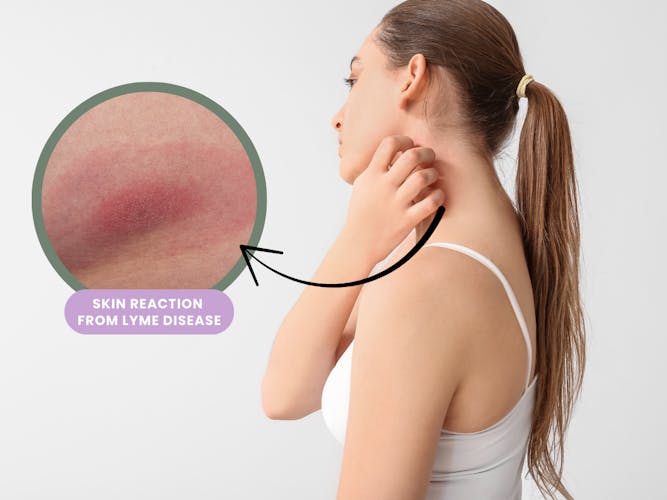Lyme disease. You’ve likely heard of it, perhaps know someone who has battled it, or maybe you’re wondering if it could be the cause of your own unexplained health challenges. Often called “the great imitator,” Lyme disease and its frequently associated co-infections can present a confusing array of symptoms, making diagnosis and treatment a complex journey. As a Certified Lyme and Co-Infections Specialist, I understand these complexities deeply.
Lyme disease is a bacterial infection primarily transmitted through the bite of infected black-legged ticks (often called deer ticks). The main culprit is a corkscrew-shaped bacterium called Borrelia burgdorferi. While a classic sign of early infection is the “bull’s-eye” rash (erythema migrans), many people never develop or notice this rash, allowing the infection to progress silently.
Beyond Borrelia: The Challenge of Lyme Co-Infections
One of the significant challenges in understanding and addressing Lyme disease is the common presence of co-infections. These are other infections transmitted by the same tick that carries Lyme bacteria. Think of it like getting more than one unwanted passenger from a single tick bite. Common co-infections include:
- Babesia: A parasite that infects red blood cells, often causing symptoms like fever, chills, sweats (especially night sweats), fatigue, and air hunger.
- Bartonella: A bacterium that can lead to a wide range of symptoms, including persistent fevers, neurological issues, skin rashes (like stretch mark-like rashes), swollen glands, and eye problems.
- Anaplasma & Ehrlichia: Bacteria that can cause flu-like symptoms, headaches, muscle aches, and low blood cell counts.
As highlighted in research discussing the “Chronic Lyme Disease Complex,” these co-infections can significantly increase the burden on the body and complicate the symptom picture more than Lyme disease alone (Smith et al., 2015). This means that what might seem like just “Lyme disease” could actually be a multi-layered infection scenario.
Lyme Disease Symptoms and Diagnostic Hurdles
The symptoms of Lyme disease and its co-infections can be incredibly varied and can change over time. They can affect any system in the body, leading to:
- Severe fatigue
- Joint pain and swelling (Lyme arthritis)
- Muscle aches
- Headaches and migraines
- Cognitive issues (“brain fog”), memory problems, difficulty concentrating
- Nerve pain, numbness, tingling
- Sleep disturbances
- Mood changes (anxiety, depression)
- Heart palpitations
Diagnosing Lyme disease can also be challenging. Standard blood tests often look for antibodies to Borrelia burgdorferi, but these tests may not be positive in the early stages of infection, or in some individuals with longstanding illness. Furthermore, testing for co-infections typically requires specialized labs and may not always be straightforward. This is why a thorough clinical evaluation by a Lyme-literate practitioner, considering your full symptom picture and exposure history, is crucial.
A Holistic and Naturopathic Approach to Lyme Recovery
Given the multifaceted nature of Lyme disease and co-infections, a holistic and naturopathic approach can be incredibly valuable in supporting recovery. This approach looks at the entire person, not just the infection, and aims to:
- Support the Immune System: Strengthening your body’s natural defenses is paramount.
- Reduce Inflammation: Chronic infections often lead to chronic inflammation. We focus on natural ways to calm this.
- Enhance Detoxification: Gently supporting your body’s ability to eliminate toxins and metabolic byproducts from the infections and treatments.
- Heal the Gut: The gut is central to immune health. Addressing any imbalances here is key.
- Manage Symptoms Naturally: Utilizing herbal medicine, targeted nutritional supplements, and lifestyle modifications to help alleviate symptoms and improve quality of life.
- Address Co-Infections: Recognizing and supporting the body in dealing with the full spectrum of potential infections.
- Provide Comprehensive Support: This includes dietary guidance, stress management techniques, and support for energy production.
A holistic approach works to create an internal environment that is less hospitable to these persistent infections and more supportive of your body’s innate healing capacities. It can be used alongside conventional antibiotic treatments or as a primary approach, depending on the individual’s circumstances and needs.
Navigating Your Path to Wellness
Lyme disease and its co-infections can feel like a hidden epidemic, but you are not alone, and there is hope. Understanding the complexities is the first step. A supportive, knowledgeable practitioner can guide you through the diagnostic process and help create a personalized, holistic plan to help you reclaim your health.
If you suspect Lyme disease or are navigating its complexities, specialized holistic support can make a significant difference. Reach out to our Huntington Beach office at (714) 462-7707 for a comprehensive consultation.
Reference:
Smith, Aaron & Oertle, John & Warren, Dan & Prato, Dino. (2015). Chronic Lyme Disease Complex and Its Commonly Undiagnosed Primary and Secondary Co-Infections. Open Journal of Medical Microbiology. 05. 143-158. 10.4236/ojmm.2015.53018.

